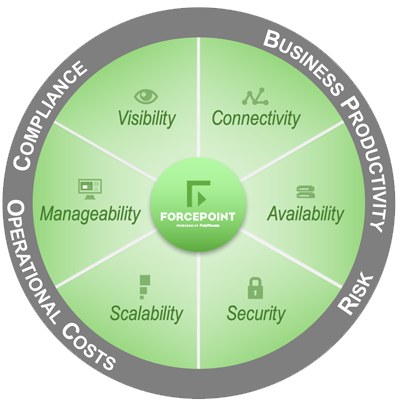Fortigate Vm Software

SR-IOVFortiGate-VMs installed on VMware ESXi platforms support Single Root I/O virtualization (SR-IOV) to provide FortiGate-VMs with direct access to physical network cards. Enabling SR-IOV means that one PCIe network card or CPU can function for a FortiGate-VM as multiple separate physical devices. SR-IOV reduces latency and improves CPU efficiency by allowing network traffic to pass directly between a FortiGate-VM and a network card; bypassing VMware ESXi host software and without using virtual switching.FortiGate-VMs benefit from SR-IOV because SR-IOV optimizes network performance and reduces latency and CPU usage. FortiGate-VMs do not use VMware ESXi features that are incompatible with SR-IOV, so you can enable SR-IOV without negatively affecting your FortiGate-VM. SR-IOV implements an I/O memory management unit (IOMMU) to differentiate between different traffic streams and apply memory and interrupt translations between the PF and VFs.Setting up SR-IOV on VMware ESXi involves creating a physical functions (PF) for each physical network card in the hardware platform. Then, you create virtual functions (VFs) that allow FortiGate-VMs to communicate through the PF to the physical network card.
VFs are actual PCIe hardware resources and only a limited number of VFs are available for each PF. SR-IOV hardware compatibilitySR-IOV requires that the hardware and operating system on which your VMware ESXi host is running has BIOS, physical NIC, and network driver support for SR-IOV.To enable SR-IOV, your VMware ESXi platform must be running on hardware that is compatible with SR-IOV and with FortiGate-VMs. FortiGate-VMs require network cards that are compatible with ixgbevf or i40evf drivers. As well, the host hardware CPUs must support Second Level Address Translation (SLAT).For optimal SR-IOV support, install the most up to date ixgbevf or i40e/i40evf network drivers. Fortinet recommends i40e/i40evf drivers because they provide four TxRx queues for each VF and ixgbevf only provides two TxRx queues.

Fortigate Simulator
Create SR-IOV virtual interfacesComplete the following procedure to enable SR-IOV. SR-IOVFortiGate-VMs installed on VMware ESXi platforms support Single Root I/O virtualization (SR-IOV) to provide FortiGate-VMs with direct access to physical network cards. Enabling SR-IOV means that one PCIe network card or CPU can function for a FortiGate-VM as multiple separate physical devices. SR-IOV reduces latency and improves CPU efficiency by allowing network traffic to pass directly between a FortiGate-VM and a network card; bypassing VMware ESXi host software and without using virtual switching.FortiGate-VMs benefit from SR-IOV because SR-IOV optimizes network performance and reduces latency and CPU usage. FortiGate-VMs do not use VMware ESXi features that are incompatible with SR-IOV, so you can enable SR-IOV without negatively affecting your FortiGate-VM. SR-IOV implements an I/O memory management unit (IOMMU) to differentiate between different traffic streams and apply memory and interrupt translations between the PF and VFs.Setting up SR-IOV on VMware ESXi involves creating a physical functions (PF) for each physical network card in the hardware platform.
Then, you create virtual functions (VFs) that allow FortiGate-VMs to communicate through the PF to the physical network card. VFs are actual PCIe hardware resources and only a limited number of VFs are available for each PF. SR-IOV hardware compatibilitySR-IOV requires that the hardware and operating system on which your VMware ESXi host is running has BIOS, physical NIC, and network driver support for SR-IOV.To enable SR-IOV, your VMware ESXi platform must be running on hardware that is compatible with SR-IOV and with FortiGate-VMs.
FortiGate-VMs require network cards that are compatible with ixgbevf or i40evf drivers. As well, the host hardware CPUs must support Second Level Address Translation (SLAT).For optimal SR-IOV support, install the most up to date ixgbevf or i40e/i40evf network drivers.
Fortinet recommends i40e/i40evf drivers because they provide four TxRx queues for each VF and ixgbevf only provides two TxRx queues. Create SR-IOV virtual interfacesComplete the following procedure to enable SR-IOV.
Fortigate Vm Software Windows 7
Downloadable VM for emulation. Is there?Hello, I'm new to this forum (and to Fortigate/FortiOS). Is there a downloadable virtual-machine version of FortiOS? (Specifically for the Fortigate 300c or something close). Perhaps some stripped down / limited version. I'd like to learn the basics.
Fortigate Vm Azure
I did sign up & saw the online demo version but I prefer something I could run as a VM and interconnect to other VM(S); e.g. Windows; Linux 'user' clients; dynamips/cisco routers; and etc. In this way I could get familiar (and test) traffic flow through the emulated Fortigate. Thanks in advance.
Comments are closed.